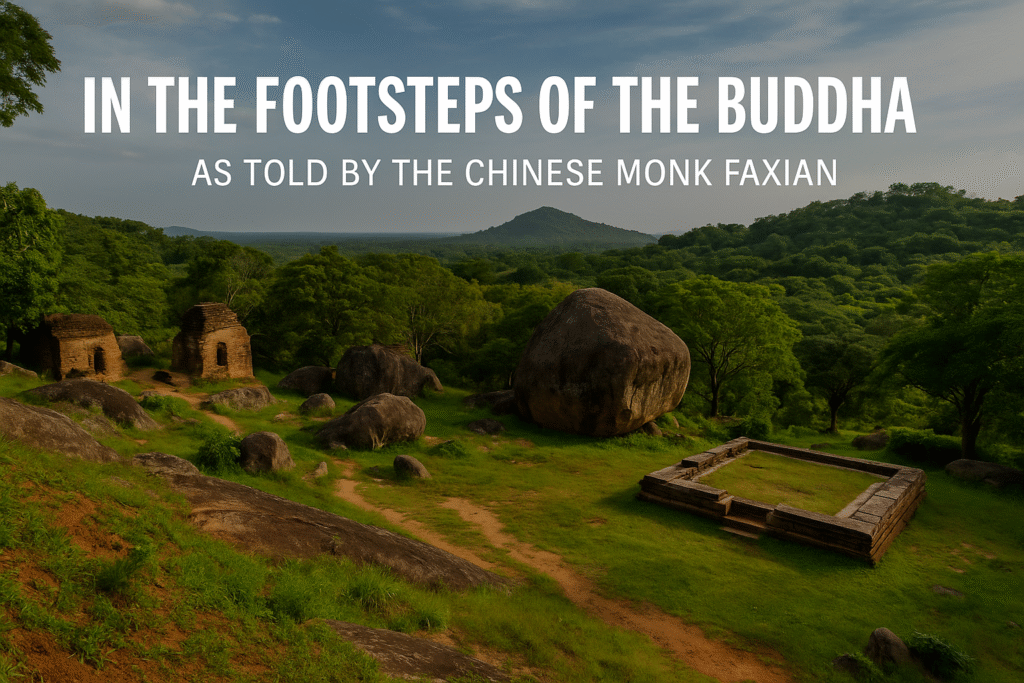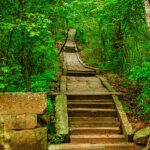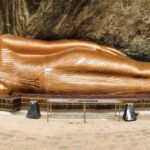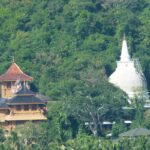Sacred Trail Through Ancient Lanka: From Bambaragala to Budugala
In the 5th century CE, the Chinese monk Faxian journeyed across the known world in search of sacred Buddhist teachings and relics. He crossed deserts, mountains, rivers, and seas to visit the most holy places associated with the Buddha. But what if the sites he described were not in India, as later traditions assumed — but in Sri Lanka?
This reimagined trail follows the footsteps of the Buddha based on Faxian’s own descriptions, matched with Lanka’s sacred geography, inscriptions, and place names. It is also informed by deep linguistic insights and oral traditions that have survived in this land for over two millennia.
“Every footprint you leave might align with one made by the Buddha himself.”
Side-by-Side Source Table: Faxian’s Journey
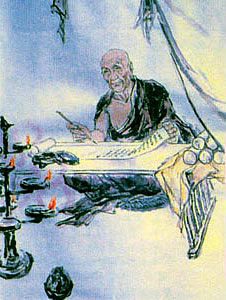
| Original Chinese (佛國記) | James Legge Translation (1886) | GPT Translation (2025) | Buddha of Lanka View |
|---|---|---|---|
| 遂西到靈鷲山。是山峻嶺,石多岩窪。頂有石臺,佛常從此說法。 | “Then they went west to Vulture Peak. The mountain is steep, rocky, with caves. At the top there is a stone platform where the Buddha often preached.” | “Then they traveled west and arrived at Vulture Peak. The mountain was steep and jagged, full of stone outcrops and rocky hollows. At the summit, there was a stone platform. The Buddha often gave teachings there.” | Likely Ritigala or Sigiriya. High mountain with platform and caves. “Vulture” may refer to Gurulla feet at Sigiriya. West of Isinbassagala. |
| 其路過沙河國,二山間流河,岸相連八十步,有鐵索懸橫以通。 | “They passed through the kingdom of the River of Sand. A river flows between two mountains; the banks are eighty paces apart, and iron ropes are stretched across for crossing.” | “On the way, they passed through the Sand River region. A river flowed between two hills, its banks about eighty steps apart. Iron ropes were suspended across it for crossing.” | Refers to Mahaweli Ganga, near Thiriyaya–Somawathiya. Sandy banks, seasonal flows, rope bridge crossings. Region of early relic enshrinement. |
| 至菩提樹處,樹尚存,雖被損毀,復長新芽。塔阿育王造焉,有石臺。 | “Arriving at the Bodhi-tree site, the tree is still there. Though damaged, it grows new shoots. A stupa built by Ashoka is there, and a stone platform.” | “They arrived at the place of the Bodhi Tree. The tree still lived; though damaged, it continued to sprout new growth. A stupa had been built there by King Ashoka, and a stone platform stood nearby.” | Describes Hiriwadunna / Siriwadunna. Bodhi tree + sacred stone platform. “Ashokan” stupa = early shrine. Sath Sathi = symbolic, not 7-day weeks. |
| 至佛涅槃處,林中有雙沙羅樹,佛在中間臥石上入滅。諸國沙門常來供養。 | “Arrived at the place where the Buddha entered Nirvana. In the forest are twin Sāla trees. The Buddha reclined on a stone couch and passed away. Monks from many lands come to offer respects.” | “They reached the place of the Buddha’s Parinirvana. In the forest stood two Sāla trees, and between them the Buddha had reclined on a stone to enter final release. Monks from many countries still come to offer reverence.” | Matches Budugala. Forest site with stone slab, twin trees, and ancient inscription (sinniñci, vakañca). Dying lotus carving nearby symbolizes final breath. |
What’s the Real Difference?
The difference isn’t between GPT and Buddha of Lanka — it’s between James Legge’s colonial-era assumptions and our modern, open-minded reinterpretation.
Legge, working in the 1800s, naturally matched Faxian’s words to places already accepted in India, often without questioning the geography, symbols, or language structure. GPT translation (mine) stays close to the original Chinese without assuming any Indian location, and the Buddha of Lanka (BOL) theory builds on that by placing those same clues onto Sri Lanka’s sacred terrain — using language, archaeology, and historical names.
Here’s how they compare:
Comparison Table: Legge vs GPT vs Buddha of Lanka
| 📖 Description | 🕰️ Legge’s Style | 🧠 GPT Translation | 🪷 Buddha of Lanka View |
|---|---|---|---|
| Tone | Old-English, poetic, colonial | Natural modern English | Reflective, local, rooted in Lankan culture |
| Example Line | “Thus proceeded to the Mount of the Vulture” | “Then they traveled west and arrived at Vulture Peak” | Buddha went west from Isinbassagala to Ritigala or Sigiriya, sacred peaks used for teaching |
| Direction Detail | Vague – assumes “India” by default | Preserves words like “westward” and “between hills” | Directional clues matched step-by-step within Lanka’s landscape |
| Geographic Terms | “Desert,” “Ganges,” “Kusinara” etc. → Indianized | Translates as “river of sand,” “sacred lake,” etc. | Matches with Mahaweli, Senanayake Samudraya, Budugala instead |
| Place Names | Often imposes names like “Bodh Gaya,” “Sarnath,” etc. | Avoids adding names — keeps original meaning clean | Names reassigned based on ancient Sinhala and Pali word roots (e.g. Hiriwadunna = where Buddha stayed) |
| Assumptions | Inserted via footnotes and glosses | None — just translation | Lanka theory builds interpretation on top of clean translation |
| Connection to Land | Disconnect — symbolic and remote | Grounded in what the Chinese monks actually saw | Deeply grounded in real Sri Lankan sites, inscriptions, and folk memory |
Conclusion:
GPT translation gives you the original map.
Buddha of Lanka gives you the correct terrain.
Legge gave the world the text, but also locked it inside colonial geography.
Now we’re unlocking it again — step by step — with truth and reverence. 🙏
Let us walk, step by step, through six sacred phases — from birth to Parinirvana — as they may have truly unfolded in the land of Lanka.
📍 Phase 1: The River of Sand – Sha He = Mahaweli Ganga (Thiriyaya to Somawathiya)
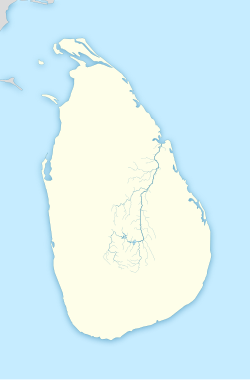
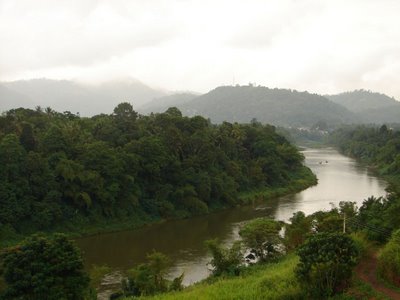
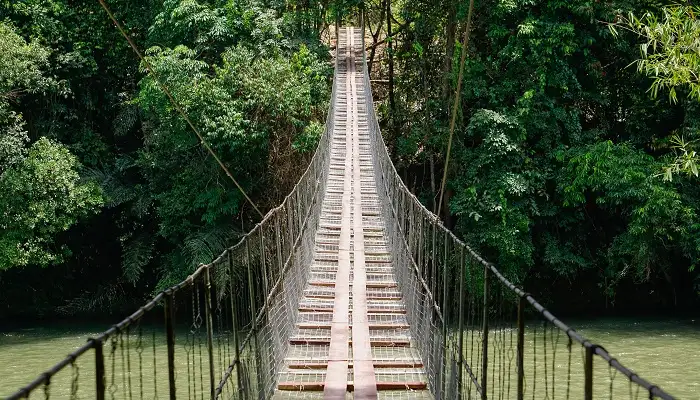
Faxian wrote of a “river of sand” crossed by rope bridges between cliffs. Though many believed this referred to a desert, the Chinese term “Sha He” more accurately translates to a sandy river.
Lanka Reinterpretation:
- Mahaweli River, especially near Thiriyaya to Somawathiya, fits perfectly
- Known for seasonal sandy banks, rope bridge traditions, and proximity to Nāga kingdom legends
- This region also includes Girihadu Seya, the first stupa built by Thapassu and Balluka — possibly the real Kapilavastu region
“This river may have been the entry point to Lanka for Faxian, who described sacred activity and daily worship along its banks.”
📍 Phase 2: The Birthplace – Kapilavastu = Giri Dupatha (Girihadu Seya)
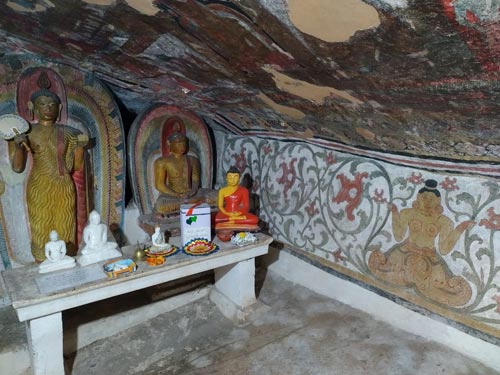
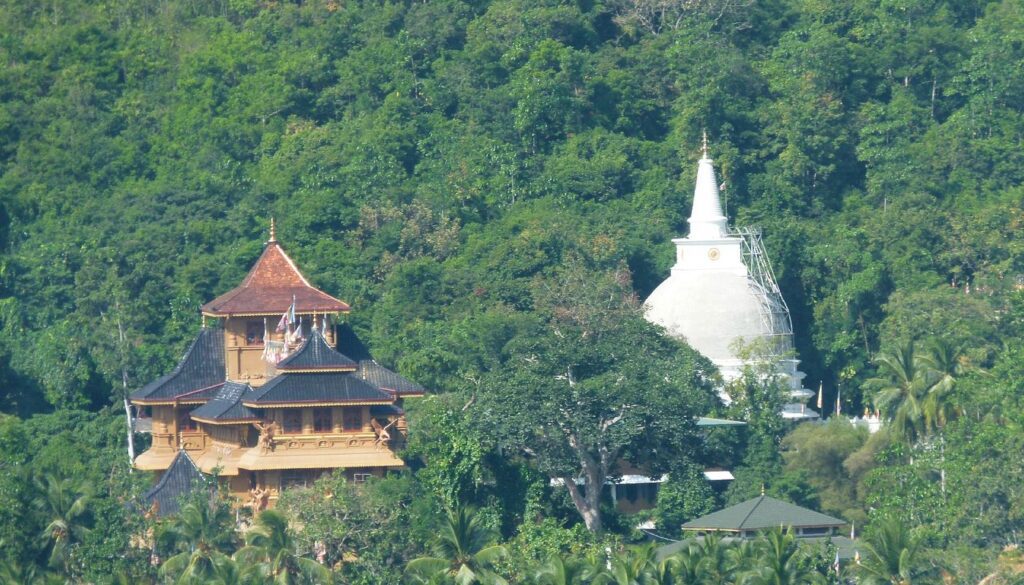
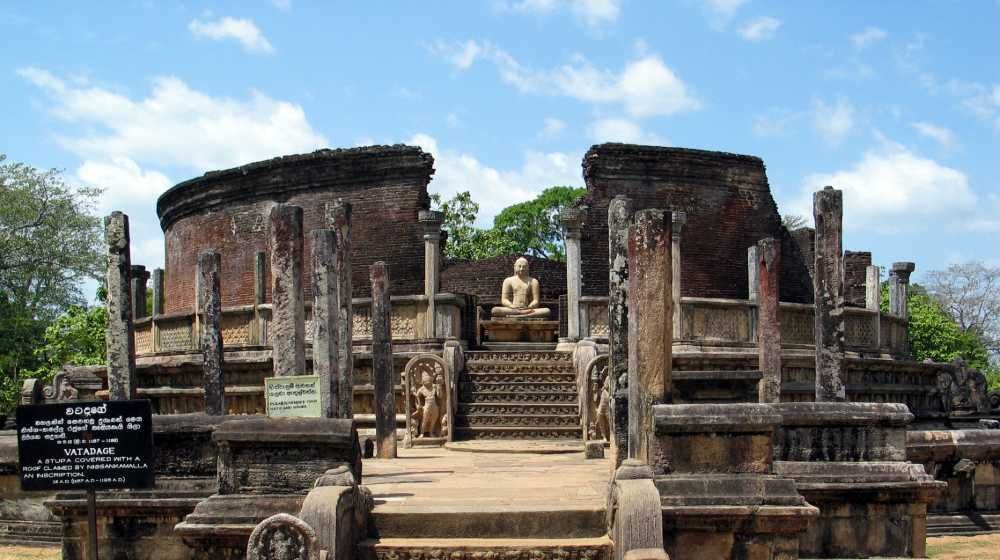
Faxian describes a sacred site with a stupa built where the Buddha was born, and notes ongoing worship. No stone pillar or Ashokan markings were recorded.
Lanka Reinterpretation:
- Giri Dupatha = Island hill near Trincomalee
- Girihadu Seya: built by Thapassu and Balluka, possibly over the site of Buddha’s birth or relic placement
- Nearby Nāga territory and early sea-trade link with India
The name “Giri Dupatha” (island hill) and the spiritual significance of Girihadu Seya suggest this could be the true Kapilavastu preserved in Lanka’s memory.
📍 Phase 3: The Enlightenment – Bodh Gaya = Hiriwadunna
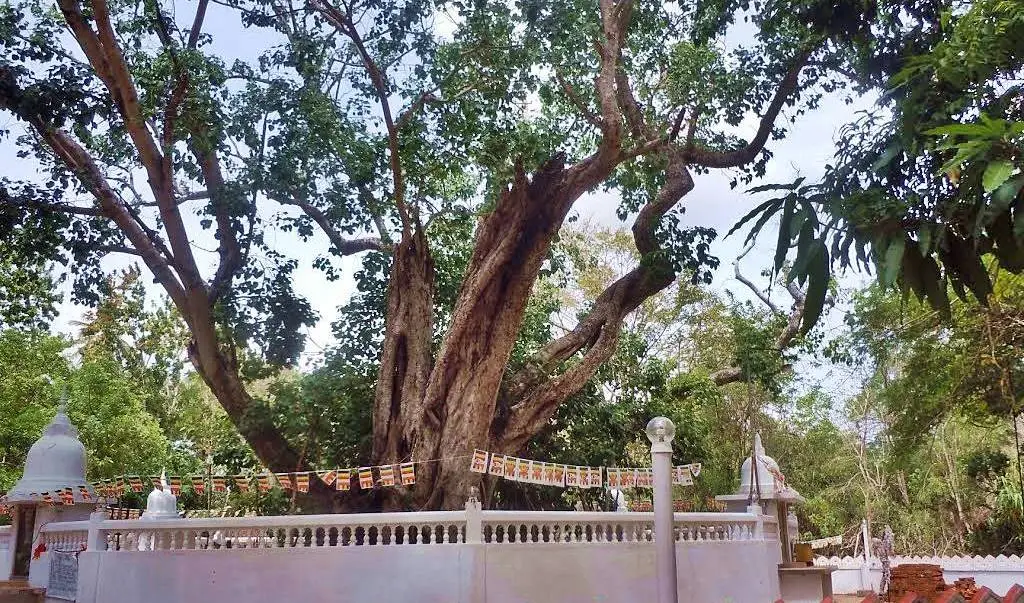
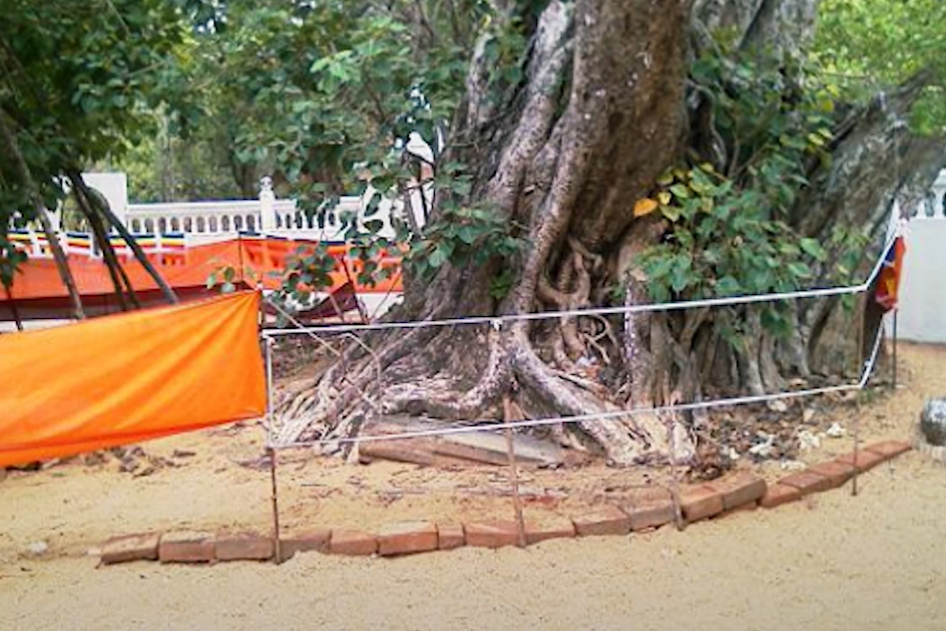
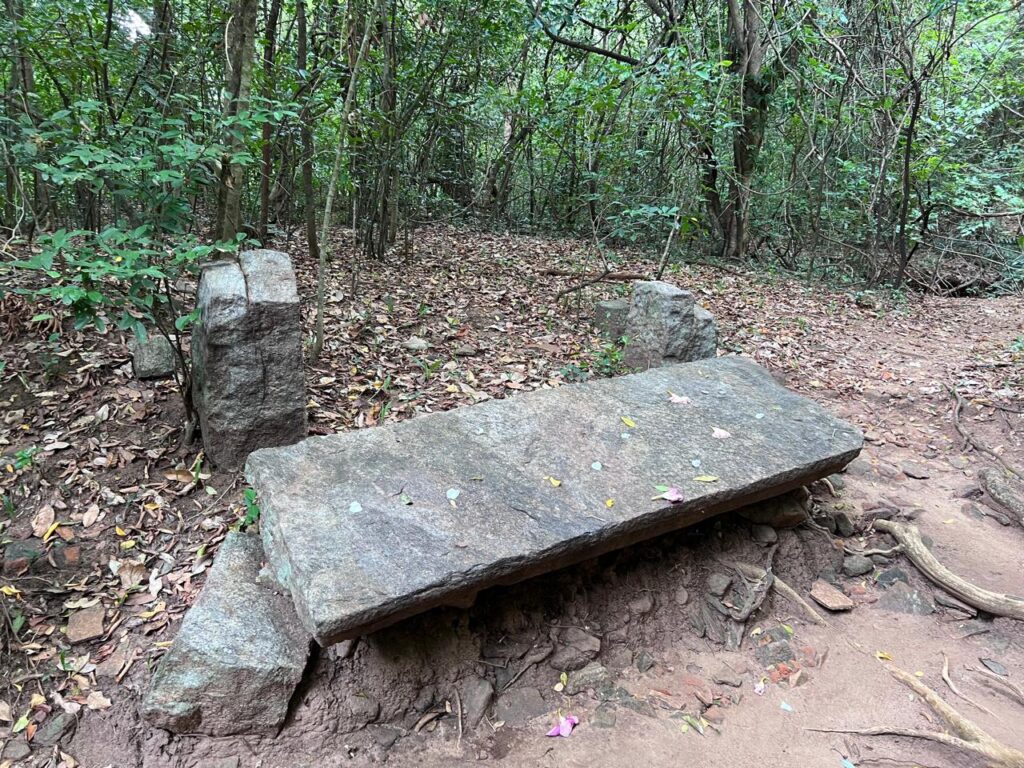
Faxian described the place where the Buddha attained Enlightenment: a Bodhi tree, stone platform, and surrounding shrines.
Lanka Reinterpretation:
- Hiriwadunna, also known as Himiwadunna or Siriwadunna
- In old Sinhala: “Wadunna” = stayed; “Himi/Siri” = Buddha
- Local tradition preserves seven sacred points but without a 7-day week system (Sath Sathi may be symbolic)
The name itself means “Where the Buddha stayed,” and the peaceful forest terrain still carries that silent weight.
📍 Phase 4: The First Sermon – Sarnath = Isinbassagala / Isipathanaya
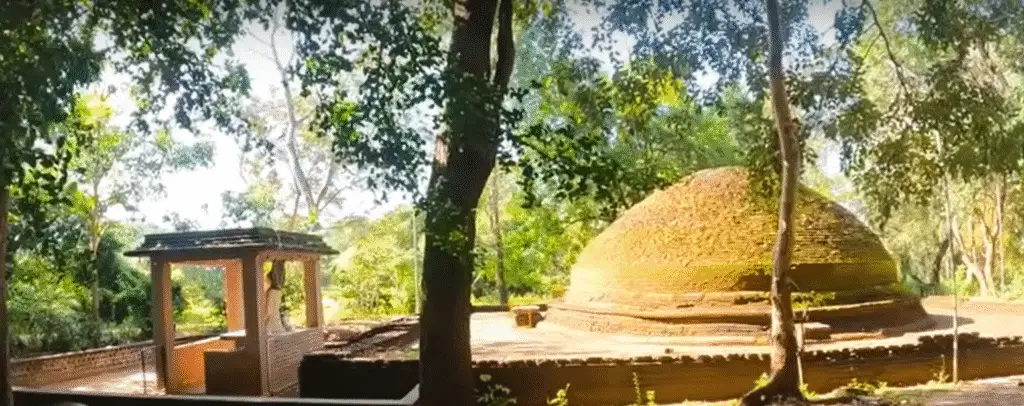
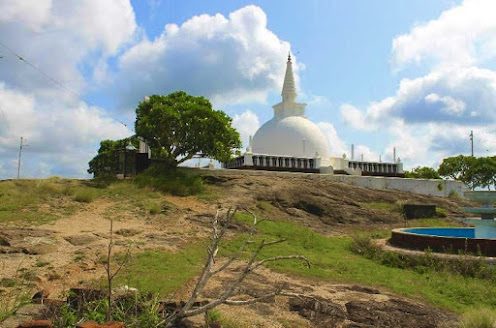
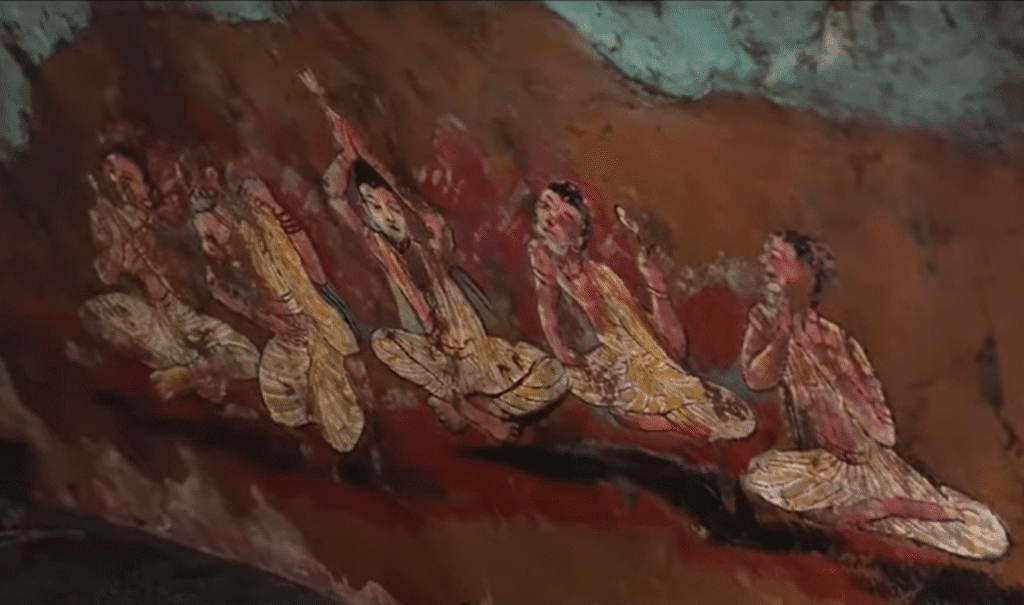
Faxian describes the Deer Park where the Buddha delivered his first sermon. There is a platform, a stupa, and nearby forest full of deer.
Lanka Reinterpretation:
- Isinbassagala = Isin (rishis), Bassa (came down), Gala (rock)
- Related to Isipathanaya = Isi (rishis), Pathanaya (descended)
- Traditional belief says rishis came from heaven, but Buddha of Lanka theory says they descended from the rock to meet Buddha on the path at Sammuka Chaithya (“meeting stupa”)
This sacred rock may be where wisdom met humility. The wheel of Dhamma began to turn on Lankan soil.
📍 Phase 5: The Healing Mountain – Vulture Peak = Ritigala or Sigiriya?
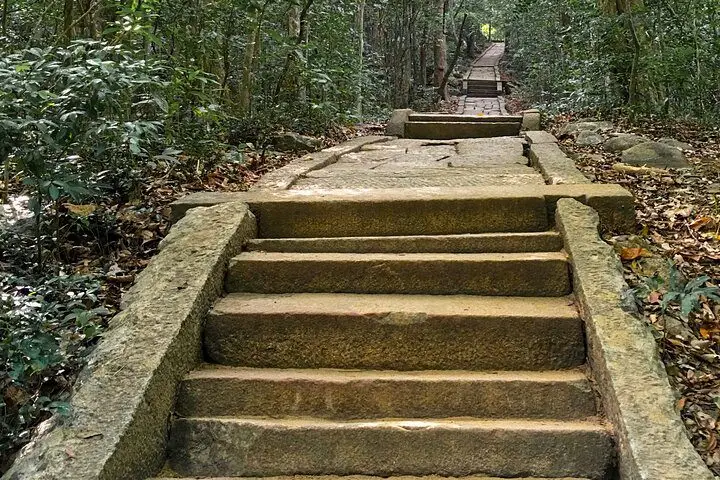
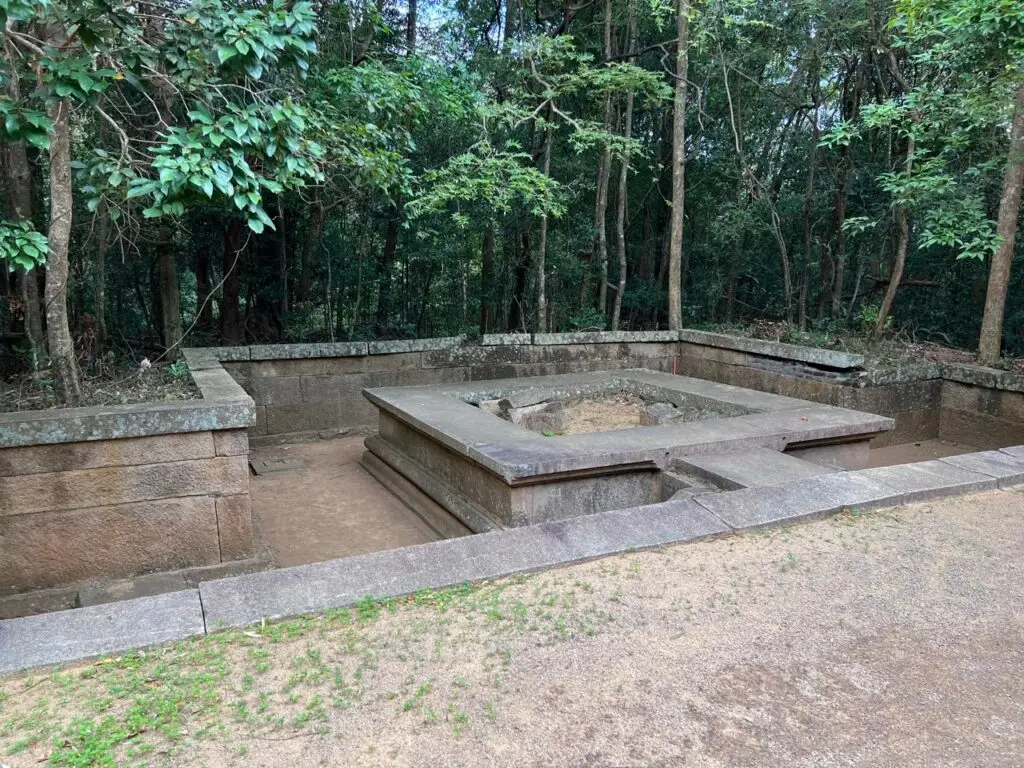

Faxian describes a high, rocky mountain where the Buddha often taught. It had a platform, caves, and medicinal air.
Option A: Ritigala
- Herbal sanctuary of forest monks
- Cool climate, medicinal plants, dozens of meditation caves
- Fitting for repeated teachings and silent healing
Option B: Sigiriya
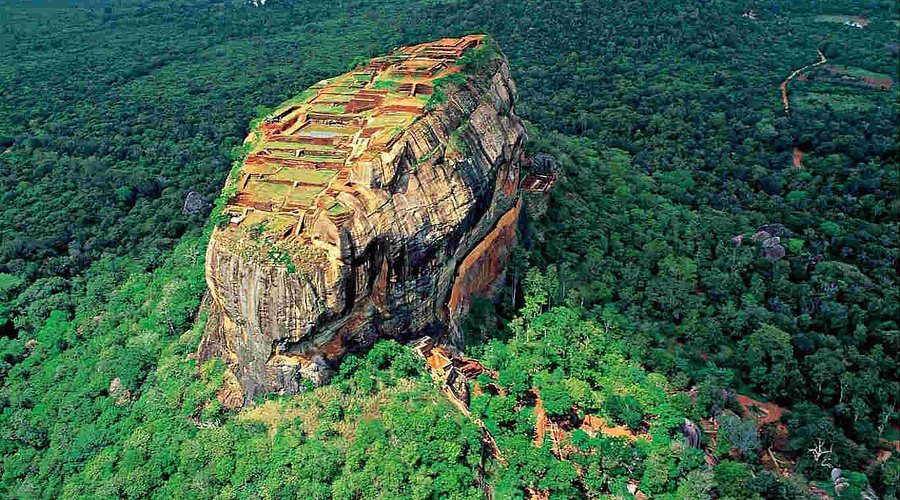
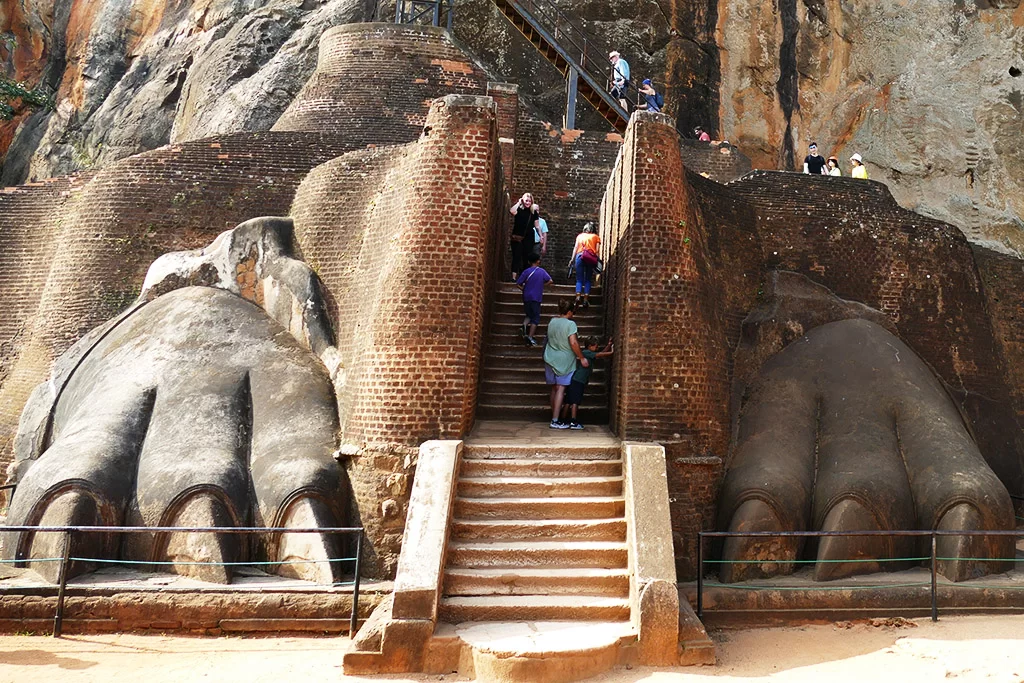
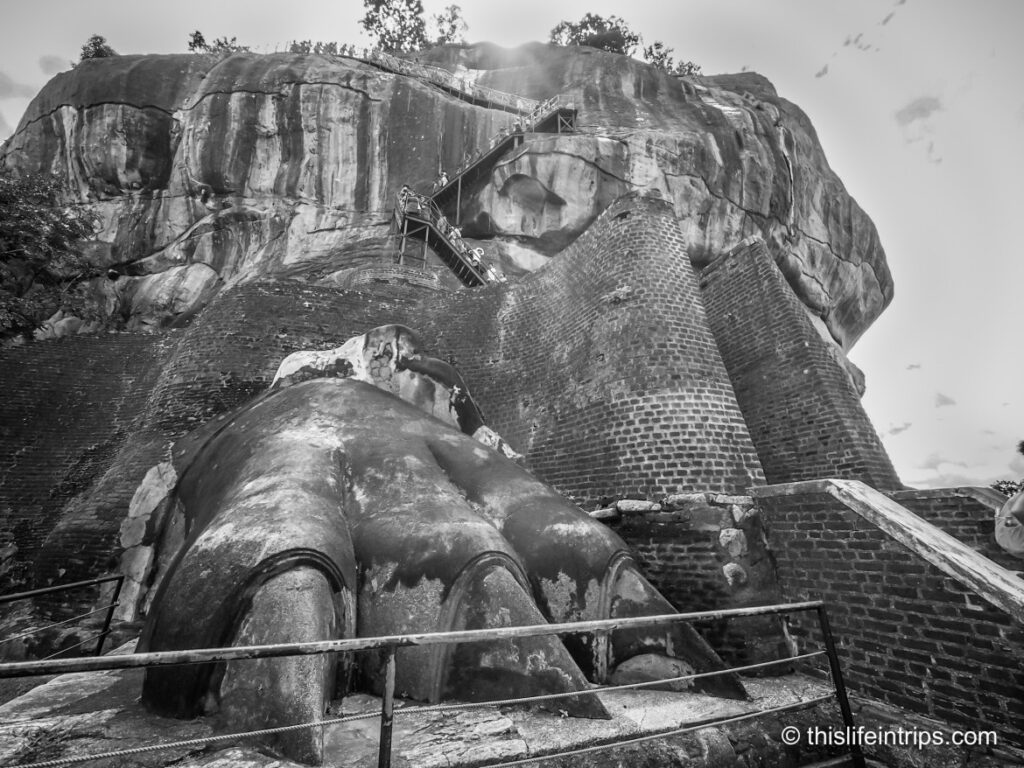
- The so-called “Lion’s Feet” may actually be Gurulla Feet (bird, possibly vulture)
- Towering summit with platform and panoramic view
- Sacred caves in Pidurangala, possibly used by monks
Whether the Buddha healed in the forests of Ritigala or preached from the heights of Sigiriya, both rocks echo with silence and sacred breath.
📍 Phase 6: The Final Journey – Parinirvana = Budugala
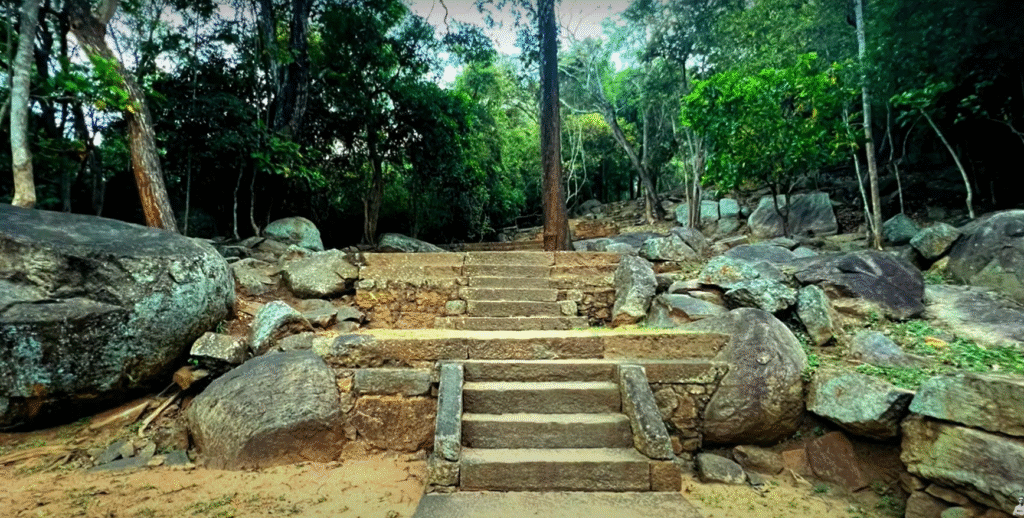
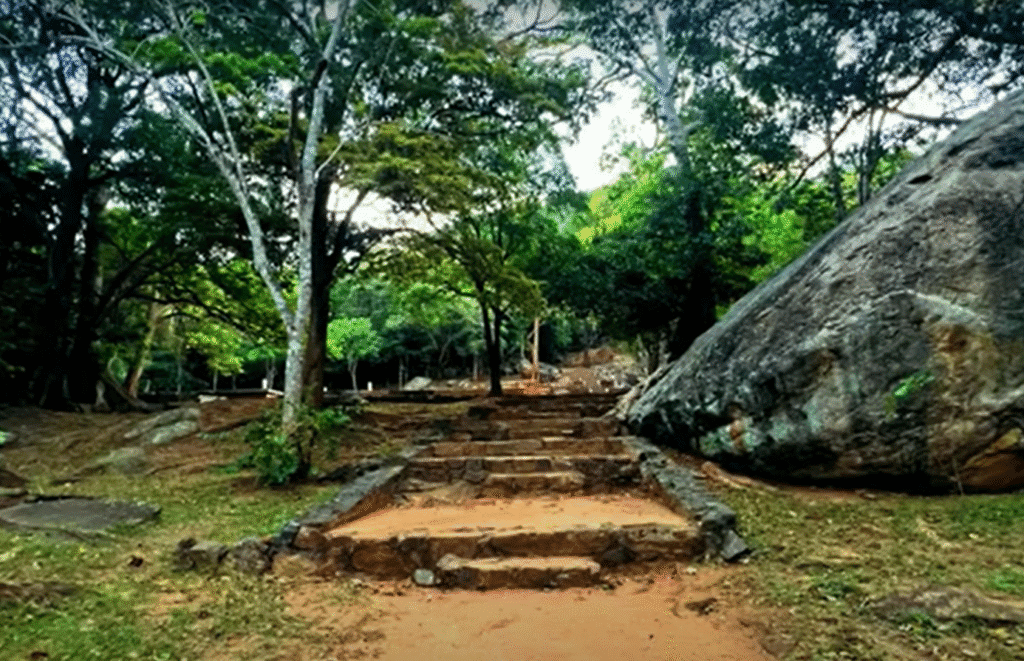
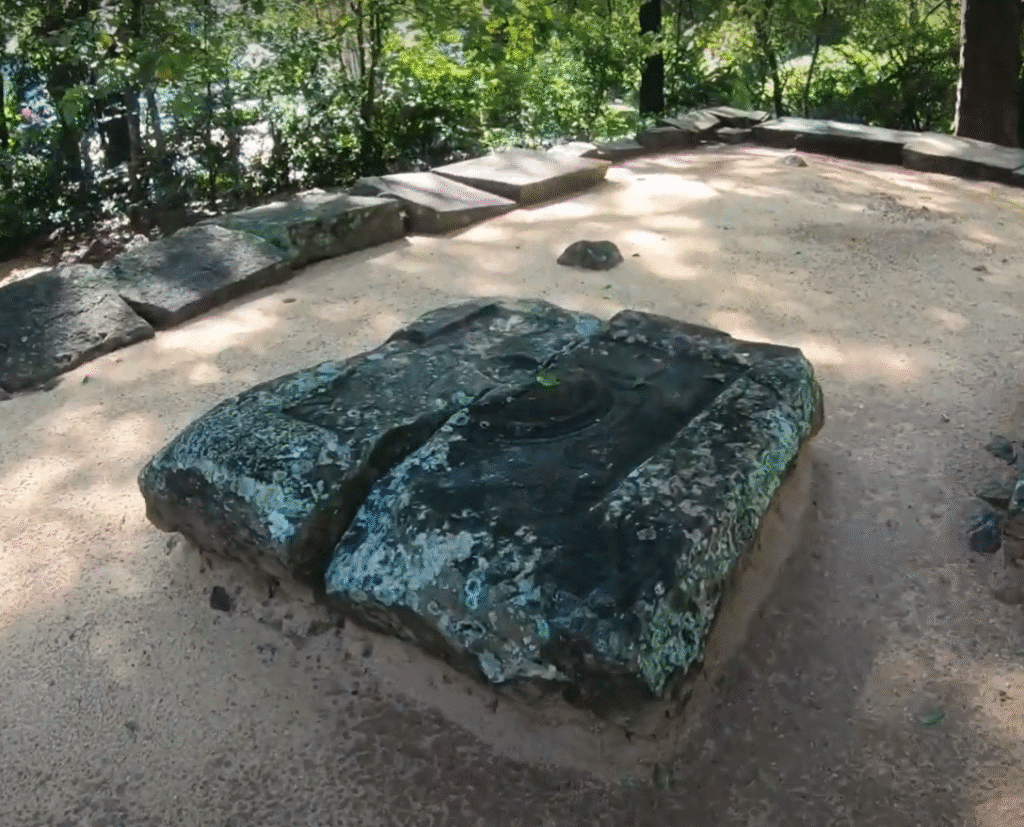
Faxian ends his trail at a forested site where the Buddha passed into Parinirvana, marked by twin trees, silence, and a stone couch.
Lanka Reinterpretation:
- Budugala Hermitage: translates to “The Buddha’s Rock”
- Remote forest, ancient stone slab, and twin trees still standing
- Nearby stone dying lotus carving adds symbolic depth
Special Feature: Ancient Inscription
Beside the rock lies a stone inscription which reads:
“Sānīti. Rāṅci of the Tuniri clan, from the Vuñji sangha, seals this offering — vakañca.”
This inscription includes phrases found in other sacred dedication sites (e.g. sinniñci = sealed). It likely records a formal ritual or offering marking the Buddha’s final release.
Here, the lotus closed. Silence bloomed.
Final Thought: Not Just a Path, But a Living Legacy
This trail is not fiction. It is carved in stone, whispered in ancient names, and guarded by trees and rock.
From Bambaragala to Budugala, from inscriptions to interviews, the sacred memory of Lanka still holds the Buddha’s presence. Let your steps align not just with pilgrimage, but with truth.
This reinterpretation is also inspired by the work of Subashini Kidelpitiya as featured in her insightful interview on the Yathartha YouTube channel. We gratefully acknowledge her contribution to this journey.
An Invitation to You: Become a Sacred Explorer
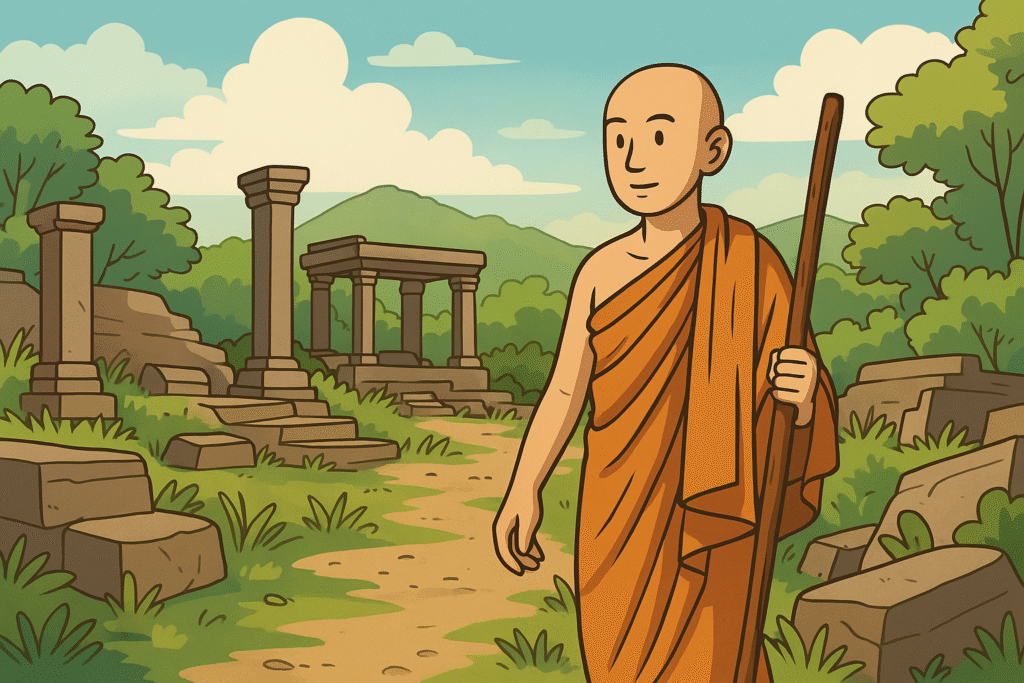
We invite spiritual travelers, pilgrims, and truth-seekers to:
🔹 Visit these sacred sites with open eyes and reverence 🔹 Compare what you see with the descriptions left by monks like Faxian 🔹 Share your own discoveries — rock carvings, ruins, local stories 🔹 Help us expand this sacred map
Send your photos, notes, and insights to info@buddhaoflanka.com
Or submit your experience on Traveler Insights from the Path Or tag us with #BuddhaOfLankaTrail on Instagram & Facebook
This trail is not finished.
It lives through you.
